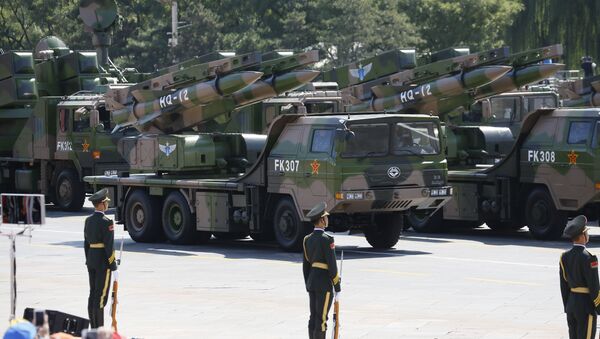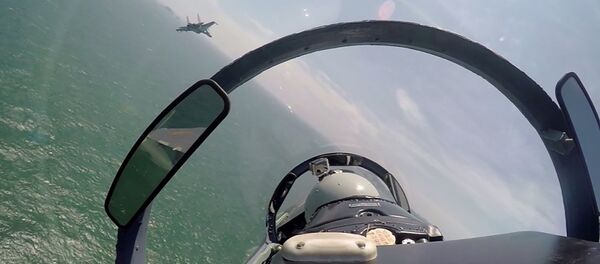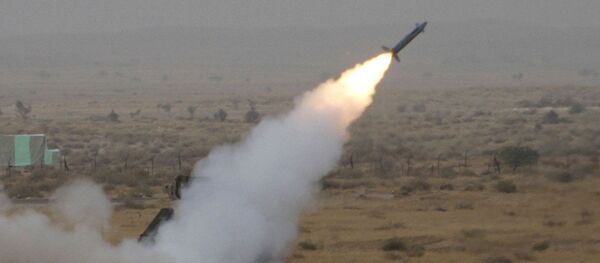In the latest sign of a new arms race between the United States and China, Beijing’s Air Force has announced the completion of a new missile defense system.
"Through innovation, ground-to-air defense troops are able to deal with far-range, medium-range and short-range missiles which can come in on high, medium and low altitudes," PLA Air Force spokesman Shen Jinke said in a statement released on China’s Defense Ministry website, according to the International Business Times.
"The capability of China’s air defense and anti-missile systems has greatly improved in the information age we live in. Our ground-to-air forces are now a powerful force to safeguard China’s airspace sovereignty."
In the South China Sea, Beijing and Washington are at odds over China’s construction of artificial islands in disputed maritime territory. While the US has accused China of attempting to establish an air defense zone, Beijing maintains it has every right to build within what it considers to be its own territory and that the island will be used primarily for civilian purposes.
In light of the Pentagon’s continued "freedom of navigation" exercises through the region, the new missile system will ensure that China can defend against incoming projectiles in the event of an attack.
Seoul’s plans to install a US-built Terminal High Altitude Area Defense (THAAD) system in South Korea is also a point of contention for Beijing. Ostensibly aimed at defending against a North Korean attack, in light of Pyongyang’s recent ballistic missile tests, the THAAD platform’s range also threatens the national security of both China and Russia.
"We will fully upgrade our strategic early warning, air strike, anti-aircraft and anti-missile, information countermeasure, air landing, strategic aerial delivery and comprehensive support," Shen added.
Last week, a Bill Gertz op-ed in the Asia Times noted that China and the United States appear to both be increasing missile stockpiles at an alarming rate.
"Beijing’s arsenal of ballistic and cruise missiles has been growing steadily for decades as new systems were fielded in an array of ranges – short, medium and intercontinental," Gertz writes.
"Several long-range cruise missiles, capable of carrying nuclear or conventional payloads also are deployed."
This buildup, according to some, will inevitably lead to conflict.
"The problem is not whether the war will break out, but when," reads a report in China Military Online. "Our task is to develop the ‘trump card’ weapon for China before the war."





